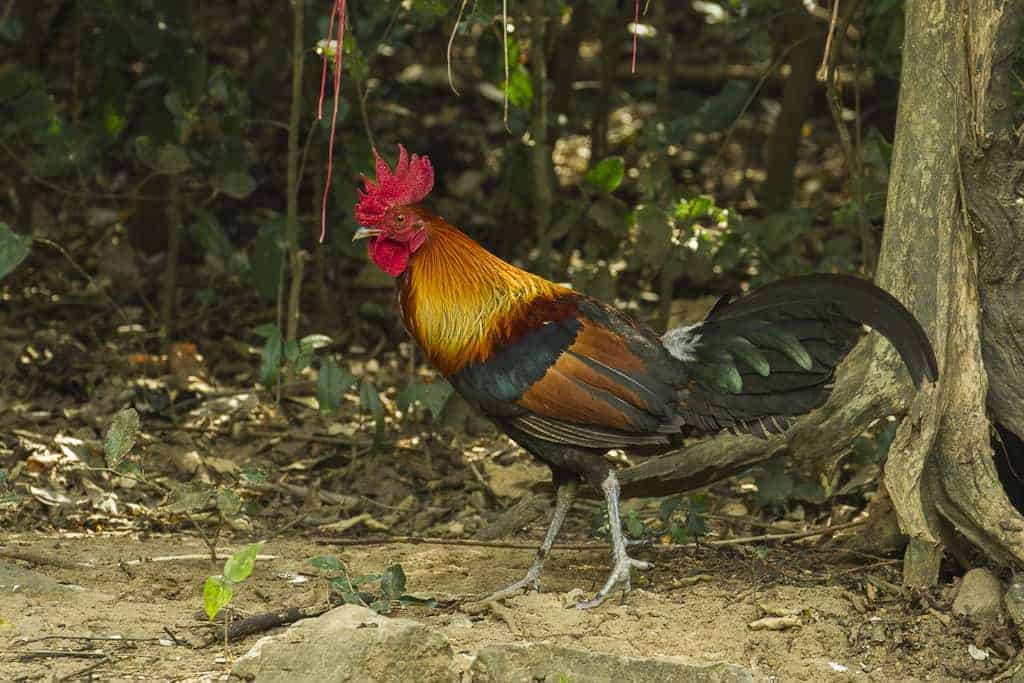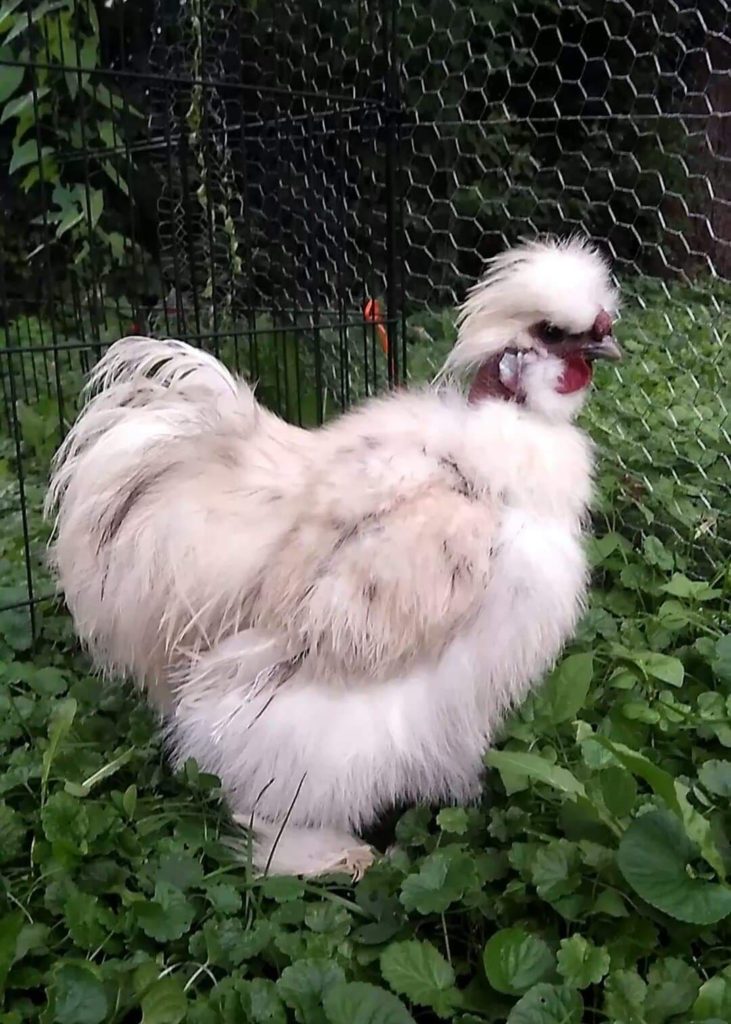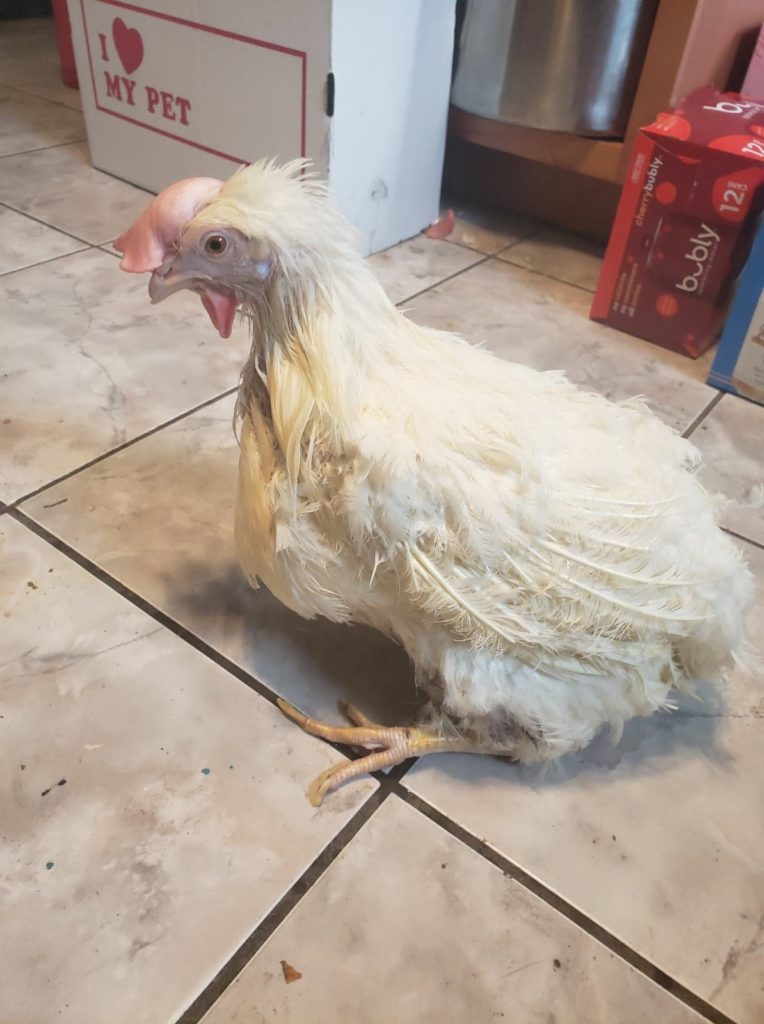
Updated March 22, 2022
A Long Road To The Present
The domestic chicken that we know and love (Gallus Domesticus) has an early history shrouded in mystery. We know that their ancestor, the Red Junglefowl, still lives in the wilds of Southeast Asia. The primary habitat of Red Junglefowl is in areas with lots of scrub, secondary forest, and mangroves. Much smaller in body mass than most domesticated chickens, Red Junglefowl also have a lifespan of approximately 10 – 30 years.
Today, domestic chickens still share many characteristics with their wild counterparts. Although they are smaller, the Red Junglefowl still looks remarkably similar to some of the birds you may have gotten to know. Although many may believe that a chicken craves wandering on an open plain, as a ground dwelling prey animal, they actually feel much safer and more content spending their outdoor time in a forested area with shady trees and lots of cover, like their ancestor. Maybe they’re looking for their own predator-proof jungle to call home! (For an example , check out this slideshow from Triangle Chicken Advocates!)
The similarities don’t end there! As ground dwelling birds, both Red Junglefowl and chickens have the ability to use each eye for a different purpose: one for smaller details, and one for looking for larger stimuli such as predators. In this way they can both forage and keep their eye out for any hidden threats. Studies indicate generally that domesticated chickens’ and Red Junglefowls’ senses (even beyond their vision) and their behaviors are very similar.
Both Red Junglefowl and domesticated chickens have well developed visual, auditory, olfactory and tactile senses. When it comes to their auditory senses for example, they have a complex communication system, which includes around 24 vocalizations which in addition to visual displays help them to establish their status within the flock structure. They both can also identify individuals visually, and potentially olfactorily, and seem to prefer associating with other birds with whom they are familiar.
In terms of their social lives, under natural conditions both Red Junglefowl and domesticated chickens show a range of social structures. They often tend to form groups of 2 -15 individuals with a higher ratio of females living in a territory defended by a dominant male, though exclusively male flocks of Red Junglefowl have been observed, and domesticated roosters can coexist very happily in rooster only flocks. Both Red Junglefowl and domesticated chickens also tend to adopt hierarchies within their social groups.
Their cognitive abilities are also impressive in both social and non-social contexts. Both Red Junglefowl and domesticated chickens engage in social learning, for example, learning what dangers to avoid by observing the experiences of others. Both also can show self-control, for example by waiting for a larger delayed reward versus immediately grabbing an instant small reward.
Sadly, one major difference between Red Junglefowl and domesticatedAdapted over time (as by selective breeding) from a wild or natural state to life in close association with and to the benefit of humans chickens is that the Red Junglefowl population in the wild is decreasing, in part due to habitat loss and in part due to hybridization with feral domesticated chicken populations. In contrast over 50 billion domesticated chickens are “produced” yearly for direct human consumption and other forms of exploitationExploitation is characterized by the abuse of a position of physical, psychological, emotional, social, or economic vulnerability to obtain agreement from someone (e.g., humans and nonhuman animals) or something (e.g, land and water) that is unable to reasonably refuse an offer or demand. It is also characterized by excessive self gain at the expense of something or someone else’s labor, well-being, and/or existence..
How did chickens get domesticated, and what impacts has domestication had on them? The prevailing theory suggests that early domesticated chickens were kept in China nearly 8000 years ago. How they spread across the world is linked to exploration, following trade routes and the silk road. Some scholars trace their journey to America over a thousand years ago through Polynesian sailors traveling to South America. Regardless of how the chicken got around, there is no question that due to human intervention, domesticated chickens can look very different from their jungle-dwelling relatives, and that their domestication has had other significant impacts on their health and well being.

Chicken Challenges
Modern domesticated chickens have been selectively bred for specific human-desired traits – specifically fecundity and rapid growth – much to the detriment of their own wellbeing. Consider the case of Cornish crosses and other large breedDomesticated animal breeds that have been selectively bred by humans to grow as large as possible, as quickly as possible, to the detriment of their health. chickens (often referred to as “Broilers” or “Meat Breeds”), the chickens most commonly consumed by people. These birds have been bred to be significantly larger and more docile than their wild counterparts. Since the 1950’s, when chicken feed was fortified with antibiotics and vitamins so that birds could be closely kept in large numbers indoors, Cornish crosses have been selectively bred in staggering numbers to almost double the size of their mid-century counterpart, with 80% larger breasts.
In industrial agricultural settings, which involve significant confinement and overfeeding, these chickens now reach industry “slaughter weight” as early as 42 days. The rapid growth that these birds undergo in these conditions contributes to a variety of health challenges, especially leg and joint problems and heart failure. A 2008 study of over 50,000 chickens in the animal agriculture industry discovered that, by 40 days of age, over 27% of the chickens had impaired walking capability and 3.3% were nearly unable to walk. It is important to note, however, that kept in an environment where they have space to thrive and engage in normal chicken behaviors, and with a carefully monitored diet, Cornish Crosses can thrive and live very happy and healthy lives.

Cornish crosses are not the only breed of chicken who have suffered as a function of human domestication. We use the term “large breed” to refer to other chickens who have been bred to grow quickly- not as quickly as Cornish crosses, but faster than other breeds- and are typically marketed as “free-range broilers.” As a group they are often called “colored hybrid broilers” but include many different Trade names such as Freedom Ranger, Red Ranger, and Kosher King. These chickens face similar health challenges as Cornish crosses, but just as with Cornish crosses, they too can live happy and healthy lives with proper care. For more information regarding how to care for large breed chickens, check out our resource here.
Further, chickens bred for their egg-laying ability produce a significantly larger amount of eggs annually than their wild counterparts and face their own unique health challenges as a result. The Red Junglefowl lays approximately 10 to 15 eggs in an entire year, in one or two clutches. A modern “egg-laying” hen has been bred to lay between 250 and over 300 large eggs in a year. Considering that it takes around a day for an egg to be formed, this means that these hens could be in the midst of producing an egg year round- a highly taxing and potentially dangerous process; egg overproduction can lead to fatal reproductive tract diseases such as cancer, egg yolk impactions, peritonitis, egg binding, and malnutrition and osteoporosis.
Although a domesticated chicken can live on average between ten and fifteen years, hens bred for heavy egg production (such as white Leghorns and sexlink hybrids) typically live closer to five years due to health complications related to egg production. In the commercial egg industry, hens are killed when their egg production or health declines, typically between one to two years old. Male offspring of “egg-laying” hens are killed shortly after birth as they hold little value to commercial egg production (and they face a similarly cruel fate in most backyard chicken settings).

In addition to using selective breeding practices for egg and meat production, other chickens have been bred for use in cockfighting or as ornamental breeds, and some breeds are considered “dual purpose” because they are often exploited for both their eggs and their flesh.
The important impacts of ancestry and domestication are both essential to consider when it comes to providing sanctuary for chicken residents. Their similarities to their Red Junglefowl ancestors require that we keep in mind their natural needs, capabilities and behavioral responses when it comes to providing them with appropriate living spaces and enrichment. But their differences from Red Junglefowl are critical in considering how we can mitigate the significant impacts that domestication has made on their general health and well being, as well as our responsibility to ensuring their wellness and safety as caregivers. When it comes to providing sanctuary for chickens, striking an appropriate balance is critical, and understanding both their origins and how they diverge from their ancestors is an important step in achieving this.
SOURCES:
Non-Cornish Chicken Care | Farm Sanctuary
Large Breed Chicken Care | Farm Sanctuary
On The Trail of The Red Junglefowl | Conservation: Issue 05 Vol 2 2010
The Domestication History Of Chickens | Thought Co
The Genetically Modified Chicken | One Green Planet
Broiler Chickens Bred For Fast Growth Have A Hard Time Walking | Science Daily








